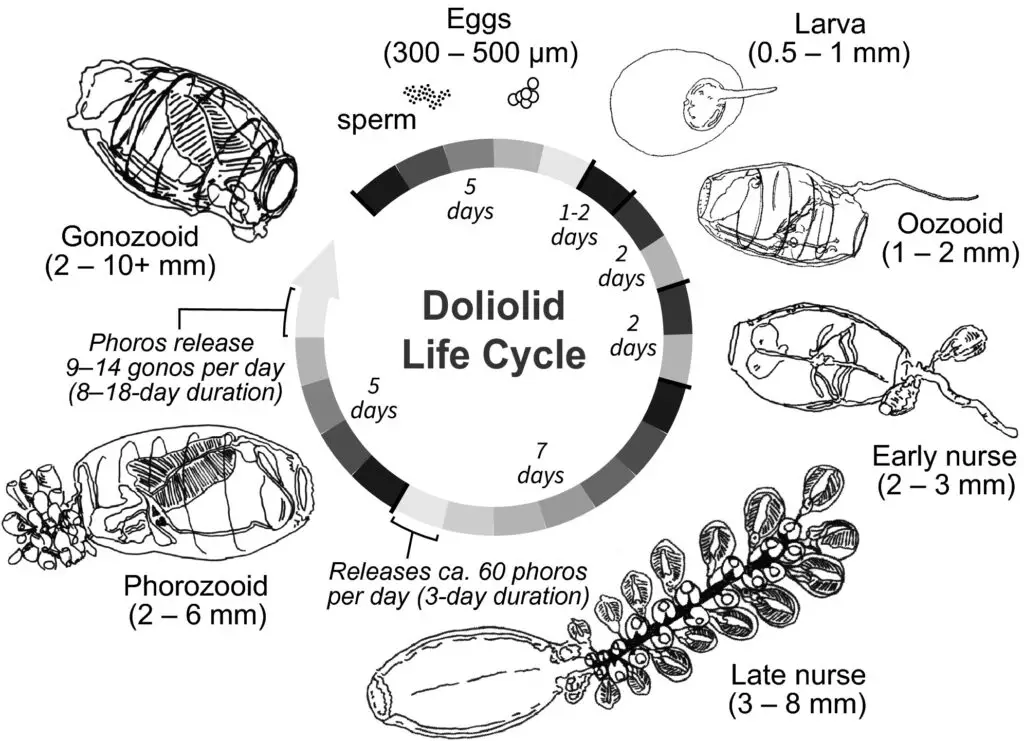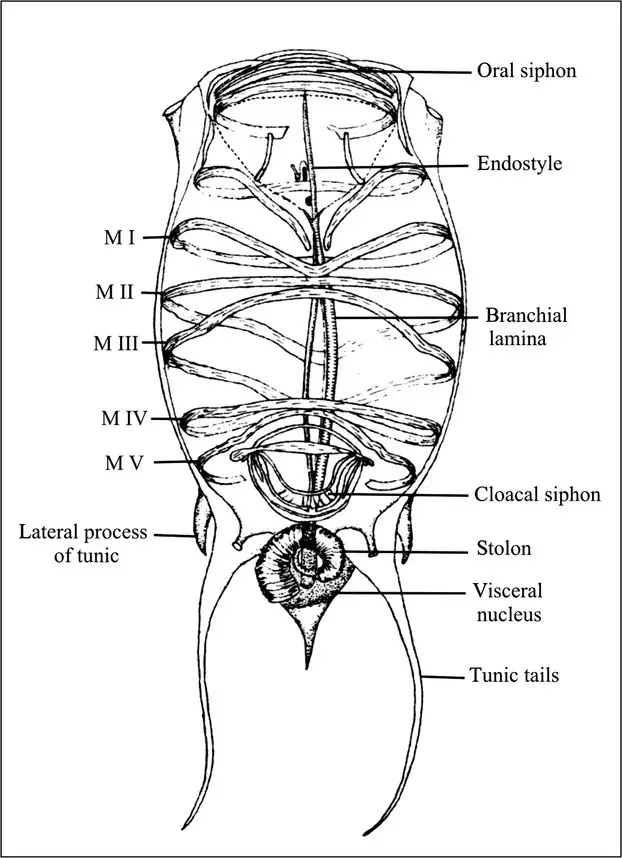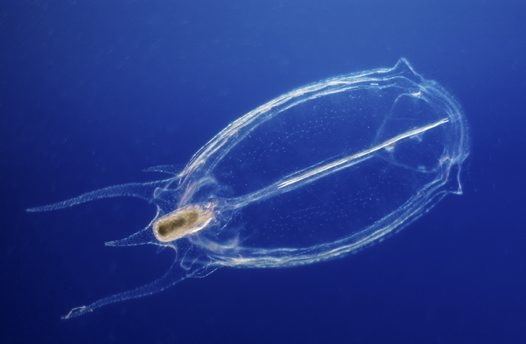As examples of Subphylum Urochordata, we will discuss some Urochordata genus, their general characteristics features, Clavellina, Salpa, Botryllus, Ascidia, Ciona, Molgula, Pyrosoma, Doliolum, Oikopleura, Ciona.
Table of Contents
Clavellina: Examples of Subphylum Urochordata:
Clavellina is a colonial Urochordate, generally observed in shallow coastal areas attached to the rock. The individual zooids are connected to the colony with the help of a branched tubular horizontal stolon.
Each zooid is connected to the stolon from its posterior end and is covered by a transparent tunic. Each zooid is around 2.5 cm long and the body is divided into the upper thorax part and lower abdomen part.
The thorax contains the neural complex, atrial siphon, branchial siphon, atrium, pharynx with dorsal lamina, an endostyle. The lower abdomen part contains the heart, intestine, stolon, and gonad, the thorax part connected to the abdomen part by a narrow short-waist part.
Hermaphrodite gonad is present inside the intestinal loop and one important feature of Clavellina is that it is viviparous. Fertilization and development occur inside the atrial cavity, development is indirect, tadpole-like free-swimming larva comes outside of the atrial cavity through the atrial pore. The free-swimming larva undergoes metamorphosis and finally become sessile oozooids.
Doliolum: Examples of Subphylum Urochordata:
It is a cosmopolitan Urochordate, in their life cycle alternation of generation present in which two different phases present, one is asexual colonial oozooid stage and another one is sexual solitary gonozooid stage.
Gonozooid:
This is the sexual stage of their life cycle, in this stage, each individual zooids have a barrel shape, the atrial aperture or anus, and branchial aperture or mouth open at the different end of the body. Atrial aperture and branchial aperture are guarded by 10 to 12 lobes that contain sense organs.
The test is so thin that the internal organs are visible from outside, the mantle layer has some circular muscular bands which encircle the body at regular intervals. The last muscular band encircles the anus or atrial aperture work as a sphincter.
Water current enters into the body through the branchial aperture and exits through the atrial aperture, the contraction of the circular muscle band produces a jet of water through the atrial pore which provides the zooids a propulsion force. The pharynx is perforated through the dorsal and ventral row of gill slits.
Heart present mid-ventrally, both testis and ovary present but ovary mature first. Fertilization occurs externally, development is indirect, has a tadpole-like larval stage, the larva undergoes metamorphosis and converted into oozooid phase.

Oozooid:
This is the asexual stage which is almost similar to the gonozooid stage but does not have gonads. The pharynx has large-sized gill slits as compared to the oozooid phase, muscle bands are 9, from the 5th muscle band a stolon originate from the ventral side and on posterior-dorsal region, it has cadophore.
The stolon has three-row, among the three rows two rows form trophozoites or gastrozooids which are responsible for nutrition and respiration, while another one-row forms phorozooids which finally form the sexual gonozooid stage.
When the phorozooids attain sexual maturity, they detached from the parent colony and become free-swimming gonozooid stage.
Salpa: Examples of Subphylum Urochordata:
Salpa is also a cosmopolitan Urochordate, it also shows polymorphism, alternation of generation observed with two stages, one solitary asexual oozooid phase and another free swimming colonial sexual gonozooid or blastozooid stage.

Oozooid:
In this solitary asexual stage in the life cycle of Salpa, the oozooids are bilaterally symmetrical and show a prism shape. The atrial aperture or anus and the branchial aperture or mouth opening are present on the opposite end of the body, the body is covered by the transparent test. The body is encircled by 9 muscular bands, first and last muscular bands form a complete ring and function as a sphincter but the seven remaining muscle bands are incomplete on the ventral side.
The mouth lead into the pharynx and the mouth opening has a dorsal and a ventral lobe. The pharynx has an endostyle dorsal lamina, the pharynx connected to the atrial cavity through a large single gill slit on two lateral sides. The stomach, intestine form a mass known as the nucleus, the heart present near the endostyle.

Gonozooid or Blastozooids:
In oozooids a stolon originates near the endostyle which produces bud and the bud on detachment forms gonozooid or blastozooids. This is the asymmetrical sexual phase of their life cycle that lacks stolon and test. Gonad is hermaphrodite, the fertilization and development of fertilized eggs occur internally.
Salpa is viviparous, the development of embryo occurs inside the body and nourishment occurs through the placenta, development is direct no tailed larva stage present. The zygote after development forms free-swimming asexual oozooids which start swimming in the water and the stolon forms a chain of blastozooid.
Reference Urochordata Classification Morphology Characteristic Features
Detailed Information on
Hi Everyone!!! Welcome to Imaluop. Imaluop always try to learn some new and he want to share to other people. Here we will try to learn various topics on Science, specially on Biological Sciences.